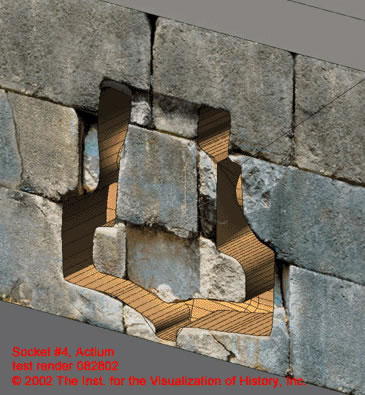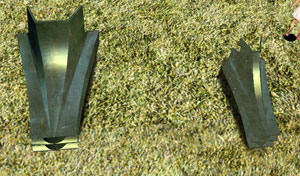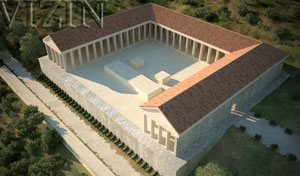Actium Actium, Greece |
Evidence
Several bits of evidence were crucial to our digital re-creation of one of the bronze ship’s rams from the monument at Actium.
For more details on these see: http://luna.cas.usf.edu/~murray/actian-ram/actian_ram_project.htm
|
|
First Steps
Once we had examined all the evidence, we first constructed a 3D computer model of the Athlit ram. We then studied the dimensions, shape, and construction of the sockets at Actium. These sockets preserve the size and shape of the actual rams at a single specific and identifiable portion of their length. We compared the construction of the sockets, especially the outline shape and the inner stone projections, with the similar shape formed by the outline of the Athlit ram. We chose a single socket (number 4) for a test and began to model the socket and part of the wall of the monument's podium. |
|
Morphing
Working with our 3D computer model of the Athlit ram as a guide, we used various computer programs to "morph" that ram's model to fit into Socket #4 at Actium, being sure that any change in the shape of a section of the new ram (made in order to fit into the socket) was reflected in actual deformation or proportional enlargement in the entire ram. This was necessary to maintain the overall integrity of the shape in relation to how these rams originally fit onto the ship hulls. Using virtual reality, we could test - in real time - whether or not the new ram was beginning to fit into the socket we had modeled. The process continued until we had a secure and tight fit. The model was further tweaked using the depictions of rams from the battle sculpted on the arch at Orange (see above), which we determined were probably the most accurate rendition of the actual rams, primarily due to the shape of the rear flap, with the distinctive inward curve. This curved shape matches the inner shape of the sockets at Actium and does not appear on other images of ancient rams. Nor does this feature exist on the Athlit ram. Result
The resulting ram for Socket #4 at Actium is substantially larger and more massive than the Athlit ram, but accurately depicts, as closely as the evidence permits, the actual ram that once projected from that socket. |
click on images to enlarge
Reference
Page Created: October 5, 2004
Page Updated: December 9, 2011
URL:
Page Author: The Institute for the Visualization of History
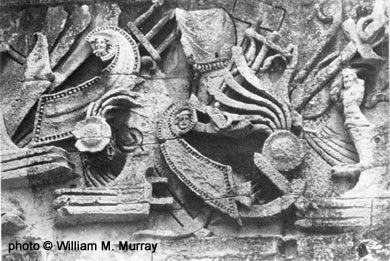 Rams from the Arch at Orange
Rams from the Arch at Orange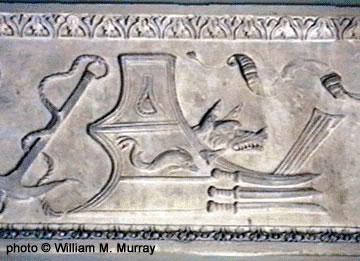
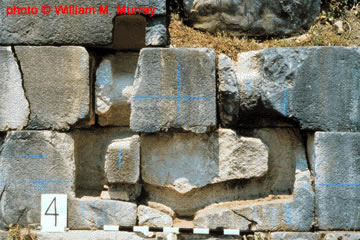 Socket 4 at Actium - (photo courtesy of William M. Murray)
Socket 4 at Actium - (photo courtesy of William M. Murray)